Your Cart is Empty
Apartment Gardening: A Beginners Guide to the Perfect Tiny Garden
Are you looking to bring some greenery into your apartment but feeling overwhelmed? Don’t know where to start your apartment garden?
Even if you live in a flat in the middle of a city, you can easily transform any small space into a beautiful and thriving garden.
You don’t need raised beds, all you need is a windowsill or balcony. This beginners guide to the perfect apartment garden will tell you all you need to know, best plants for your city oasis and what to avoid.
If you are trying to lead a green lifestyle and live more sustainably, an apartment garden is a great step that will make you happier and healthier.
Let’s start from the top, how do I start a garden in my small apartment?
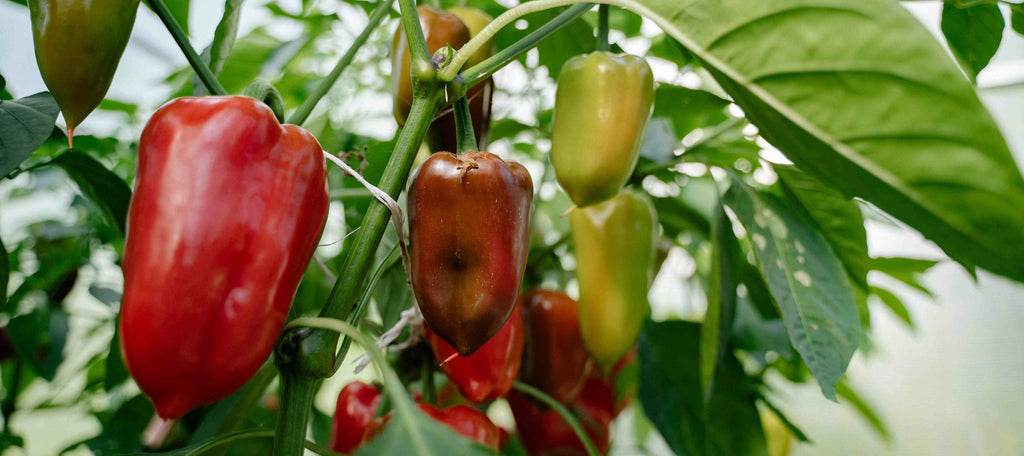
How do I start a garden in my small apartment?
If you are wondering how to start a garden in your small apartment, there are a few things you must first consider. So let’s start here.
Be realistic about your space
Before you start an apartment garden, it's important to assess the available space.
A small balcony might be the perfect spot. If you have a balcony, take into consideration the weight limit. Some large pots can weigh a lot, especially when filled with beautiful plants and topped up with water.
No balcony? No problem. This is where you will need to get creative.
A windowsill is the obvious first choice. Here you can put your pots or trays, and your plants can bathe in the sunlight.
Next you can expand upwards and outwards. Strategically placed pots liven up a room and bring oxygenators into your flat.
Be willing to experiment. If you don’t get the placement of indoor plants right the first time, you can always move them.
Furniture can be used to place plant pots on. You can suspend hanging baskets from shelves. There are hundreds of ways to bring nature inside your flat. You can even turn your old T-shirts into plant pot hangers.
Here is some inspiration for your future apartment garden:
Next on the list should be to assess your lighting.
Lighting in your indoor or outdoor apartment garden
The most important thing when planting your apartment garden is sunlight.
We all have favourite foods. Similarly, plants can be a little fussy. Some love a bright spot and need direct sunlight, whilst others will burn if exposed to too much sun. Many plants only thrive in shaded spots.
It's important to choose plants that will do well in the lighting conditions of your apartment.
A general guideline is as follows:
- Full sun: 6-8 hours of direct sunlight: most vegetables and flowers will prefer direct sunlight through the day
- Partial sun: 4-6 hours of direct sunlight: most flowering plants, herbs, succulents
- Partial shade: 2-3 hours of direct sunlight: spider plants, some orchids, leafy plants like ivy or ferns
- Shade: Less than 1 hour of direct sunlight: peace lilies might be a good choice
So how do you know how much light your apartment garden gets? Simple, just check every hour or so through the day. By the end of the day you should be able to roughly calculate the number of hours your plants will get.
Whilst this doesn’t sound important, it’s a critical first step. Even shady spots will be able to thrive, but you’ll need to make sure you pick the right types of plant.
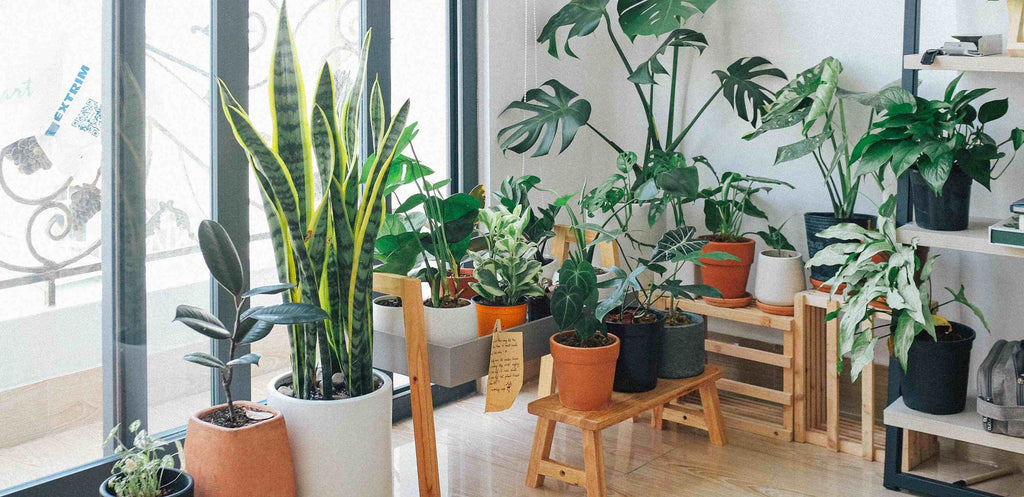
How to Optimise Lighting for Indoor Plants
Without enough sunlight, your plants may become leggy or stunted. That’s why it’s important to optimise the lighting in your apartment garden.
Here are some top tips on how to optimise lighting for indoor plants:
Choose the right location: If possible, place your plants in the brightest spot of your apartment. South-facing windows typically receive the most sunlight, but east- and west-facing windows can also provide sufficient light. This isn’t always possible though, which is why getting the right type of plant for each location and light level is critical. If your apartment doesn't have any windows that receive direct sunlight, you might wish to place your plants under artificial grow lights.
Rotate your plants: To ensure that all parts of your plant receive sufficient light, rotate them every week or two. This will help prevent your plants from becoming lopsided or uneven (which we have all done before).
Use reflective surfaces: Perhaps a little over the top, but reflective surfaces such as mirrors or white walls can help amplify the amount of light your plants receive.
Choose the right plants: Different plants have different light requirements. Some plants, such as succulents and cacti, prefer bright direct light, while others such as ferns and snake plants, can tolerate lower light levels. When choosing plants for your apartment, make sure to select varieties that are well-suited for the lighting conditions in your space.
Supplement with grow lights: If your apartment doesn't receive enough natural light, you can supplement with artificial grow lights. LED grow lights are a popular option, as they are energy-efficient and can be adjusted to emit the specific wavelengths of light that your plants need.
Remember, each plant has its own specific lighting needs, so it's important to research the requirements of the plants you plan to grow and adjust your lighting if needed.

Choosing the Right Containers for Your Plants
Perhaps not something you had considered, but it’s important you choose the right container for your plants.
Why is this important? The right size pot will allow for proper drainage and aeration. Here’s some top tips to follow:
- Size Matters: Each pot must be big enough for your plant. If the pot is too small, your plant will be stunted and not grow. On the flip side, if your container is too large, it could hold too much moisture and cause root rot. A good rule of thumb is to choose a pot that is 2-4 inches larger than the diameter of your plant's root.
- Drainage: Make sure there are holes in the base of the pot to allow excess water to drain away from the plant’s roots. If excess water isn’t draining, your plant will become waterlogged and develop mould. You may have a favourite pot without any holes. Not a problem, just grab a drill and create some.
- Select the right material: Plant pots come in all shapes and sizes, as well as materials. They can be made from plastic, ceramic, metal, terracotta to name but a few. Each material has its own advantages and disadvantages. Plastic is lightweight and inexpensive, but can become brittle over time. Ceramic and metal containers are durable but can be much heavier with less drainage. Terracotta pots are porous and provide good drainage, but can dry out quickly and require more regular watering.
- Consider the look of the pot: When trying to create the perfect oasis on your balcony or in your flat, don’t forget about the aesthetics of your pot. Choose one that complements your decor and personal style.
These tips will help you create a beautiful and functional apartment garden. Take your time and choose wisely, your pot choice can make you a very happy and proud apartment gardener.
What is easy to grow in an apartment?
Hopefully you have a good idea of lighting, space and the style of pot you are looking for. So now for the important question, what is easy to grow in an apartment?
This will largely depend on the time you want to spend caring for your plants, and what you want to get out of them.
There are hundreds of benefits that plants can provide. Do you want to grow plants for food? Plants to purify the air, produce herbal medicines, or just ones that are aesthetically appealing?
A quick word of warning before reading on, especially if you are a parent or pet owner. Always check the toxicity of your plants before bringing them into your home. Most are safe, but there is no harm in checking before you position them in a reachable place.

What plants are good to grow in an apartment?
There are a range of plants that are easy to grow in an apartment. Each has a different purpose. Here are a few that you might like to consider:
Indoor plants for air purification:
- Peace Lily: a very popular houseplant. This indoor beauty has white flowers and is one of the top air purifiers. They absorb airborne toxins through their leaves and break them down in the soil. They also do well in lower light levels.
- Spider Plants: a perfect beginner plant that’s easy to grow. Filters carbon monoxide, as well as formaldehyde, benzene and xylene. For this reason, they are best in kitchens, especially if you have a gas stove.
- Aloe Vera: we all know about Aloe Vera’s amazing health and beauty benefits. It also helps purify the air whilst releasing oxygen and absorbing carbon dioxide. Perfect for when you are asleep.
- Weeping Fig: there is evidence that Weeping Figs are effective at cleaning airborne chemicals found in adhesives, nail polishes, glues and stain removers. Although do keep it out of reach from animals as it can be harmful.
- Boston Fern: ferns are a resilient indoor plant that again grows well in lower light. A Boston Fern can also help to restore moisture to the air, making them one of the top air purifying plants.
- Bamboo Palm: Bamboo Palms are near the top of most clean air studies. They do a great job of purifying air and help get rid of toxins from paints and new carpet. They are on the bigger side though and can grow up to 12 feet, so might be a squeeze if working with a small space.
- Chrysanthemum: these beauties provide a burst of colour, lighting up any position. They come in a range of colours, from yellow, pink, red and white. They will need a lot of direct sunlight to reach their full potential.
- English Ivy: resilient little plants that can nicely break up a dead space. They cleanse the air, and can be left in darker spots that need a touch of greenery. This is why they work well in bathrooms.
- Golden Pothos: these powerhouses work well in a pot or hanging basket. They filter formaldehyde from the air, which can be left over from carpets, paints, glues and other DIY projects.
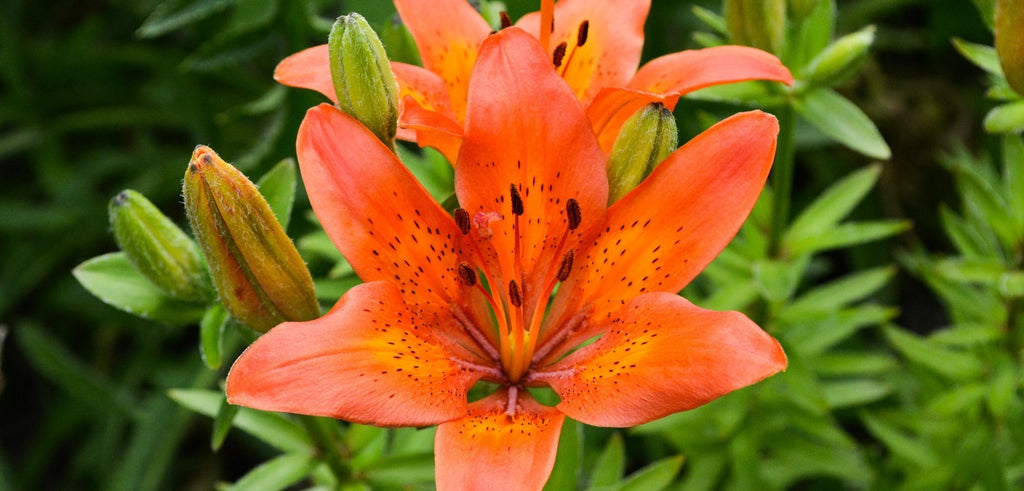
How do I grow herbs in my apartment?
Most herbs thrive in an apartment garden because they do well in small spaces and don’t require a lot of maintenance.
What herbs grow well in an apartment garden? Here are some of the best ones you can grow inside your flat or on a balcony:
- Basil: a popular (and tasty) herb that is easy to grow indoors, on a windowsill or on a balcony. They do require plenty of light and well draining soil. Most importantly, they really add a fresh, aromatic flavour to many dishes - especially on pasta or pizza.
- Mint: a cool, refreshing herb that grows well in lower light levels. The leaves work perfectly in many food dishes, desserts and drinks. Keep your mint in a small container and trim it back often to encourage new growth.
- Parsley: parsley is a common garnish used in soup, stews, roasts and salad. Its favourite spot is in bright but indirect sunlight with well-draining soil. Do note that parsley is biennial, meaning it will come back after two growing seasons - the first it will develop delicious leaves, and in the second year will go to seed.
- Thyme: thyme works well in a variety of dishes. Again it likes bright but indirect sunlight and well draining soil. Keep it well trimmed to encourage new leaves.
- Rosemary: rosemary has a floral fragrance that adds flavour to meats, soups and stews. It likes to sit in direct sunlight and well draining soil. It can be grown in a large container and pruned regularly to shape.
- Chives: chives have a mild onion flavour, as they are a member of the onion family. They work well in salads, soups or scrambled eggs. Chives prefer indirect sunlight and well draining soil, sitting in a small pot and again trimmed regularly to encourage new growth.
These are just a few examples of herbs that can be grown in an apartment garden. Other herbs that can be grown indoors include lemon balm, sage, oregano, and cilantro.
Herbs are incredibly easy to grow in an apartment. You can even plant supermarket living herbs straight from the pots you buy in store.
By growing your own, you can enjoy fresh, flavourful herbs year-round and add a touch of green to your apartment.

What fruits and vegetables can I grow in an apartment?
When choosing which fruit and veg to grow in your apartment garden, you have to remember the space and light levels you are working with.
Here are some of the fruits and vegetables that you should consider growing in your apartment garden:
- Tomatoes: tomatoes are a very popular choice for apartment gardeners looking to grow fruit and veg. They grow well in a small pot and don’t require a lot of space. You must keep tomatoes in direct sunlight and well draining soil, and tomato food can be added to increase growth and richness of the fruit.
- Salad greens: lettuces, spinach and other leafy greens are easy to grow indoors or in small spaces. You can pick them as baby greens or allow them to mature into larger plants. They prefer a bright spot and moist, well draining soil.
- Peppers: another edible vegetable that can easily be grown in an apartment garden. They must be kept in bright, direct sunlight and well draining soil.
- Microgreens: don’t overlook microgreens, micro herbs or microleaves. Harvest these small leafy herbs and plants before they get to full size. They can be grown all year round on a windowsill indoors. They can be grown in just about anything, from an old seed tray to a yoghurt pot, and should be ready to harvest in just one or two weeks after sowing. Rich in antioxidants, vitamins and minerals such as iron, folic acid and potassium, these gold mines are easy to grow in your apartment garden.
- Strawberries: from experience these can be a bit more temperamental, but they are well suited to be grown in your apartment garden. They need plenty of sunlight and well draining soil.
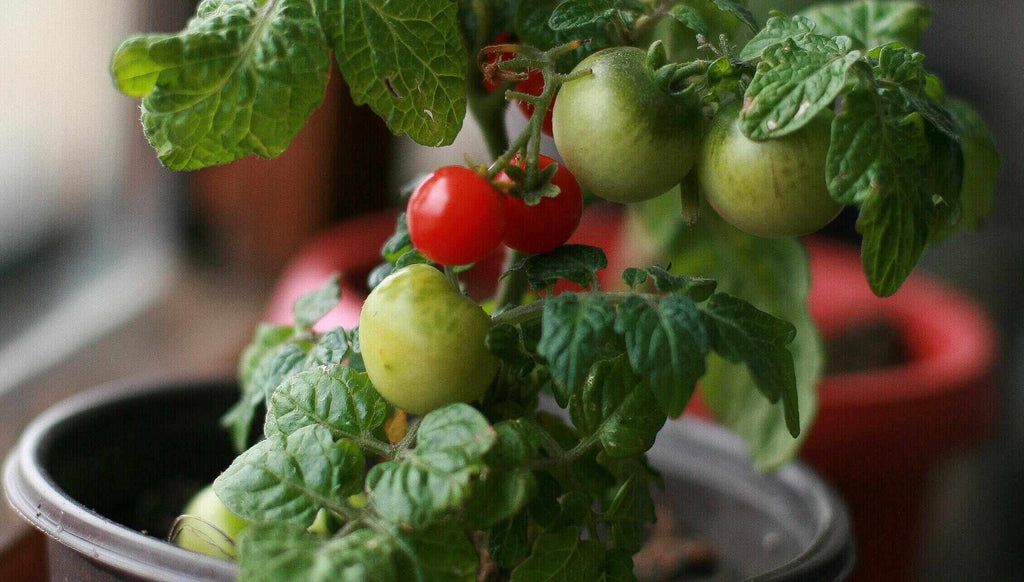
What is the best flower to grow indoors?
There are many flowers that are easy to grow indoors. These will help beautify even the smallest spaces, adding much needed colour to a room.
Succulents, cacti and air plants can provide low maintenance flowers that brighten a room. Here are some of our favourites:
- Peace lilies: peace lilies are one of the best flowering houseplants, and for good reason. They produce a beautiful white flower and luscious green leaves. What’s even better is that a peace lily is one of the easiest indoor plants to take care of. If you forget to water it, it will tell you when it’s thirsty - you just need to notice how it droops. They are drought tolerant, needing to be watered just once a week. Peace lilies also do best in partial sunlight and even full shade.
- Anthurium: anthurium is the perfect beginner indoor plant. It boasts the world’s longest bloom, flowers dazzling in reds, pinks, whites and purples that last for months. Like peace lilies, anthurium’s leaves also help purify the air. Watch out, Anthurium’s roots rot easily, so make sure the top inch of soil is dry before you next water. A bright spot but indirect sunlight works best.
- Christmas Cactus: with interesting coloured tubular pinks and lilac leaves, this is a beautiful winter flower that is easy to care for during the Christmas period. It likes to be watered regularly and sits in moist soil. Humidity is its friend, which makes a kitchen or bathroom perfect. It prefers a bright spot, but not necessarily in direct sunlight.
- Phalaenopsis orchid: orchids are often seen as the trendy must-have house plant, but they are typically hard to grow. Phalaenopsis orchids are more suitable for beginners. They enjoy indirect sunlight and can tolerate more shaded spots. They do require special potting material like bark.
- Bromeliad: with colourful, exotic looking flowers, you’d be forgiven for thinking this is a high maintenance house plant. It’s actually one of the easier indoor flowers for beginners. Bromeliad is not picky about soil, although mixing regular potting soil with orchid bark works best. Only water when the soil is dry so as to avoid overwatering. This plant works best in a sunny, bright spot.
Best low maintenance indoor trees
When it comes to choosing the best low maintenance trees to grow indoors, you want to select carefully depending on the space you want it to fill.
Indoor trees are a perfect way to add colour to your room. They can look modern, elegant and classy. Here are our top low maintenance indoor trees:
- Areca Palm (Dypsis Lutescens or Golden Cane Palm): a very popular choice for a beginner apartment gardener. It’s an easy-to-care for houseplant that prefers bright but indirect light. Avoid overwatering, instead water only when the top inch of the soil is dry.
- Monstera deliciosa or "split-leaf philodendron": An easy-to-grow evergreen found in many designer spaces and famous for its "wow" factor. Its leaves have a glossy finish and are shaped in large heart shaped petals with characteristic cheese plant splits. It likes bright indirect sunlight. Water every week or so when the soil is starting to dry.
- Yucca (Yucca elephantipes): this wonderful desert native adds a uniqueness to your indoor garden. Its spiky foliage erupts from a solid trunk in an incredibly artistic way. It’s not the end of the world if you forget to water it. It’s extremely drought tolerant and only needs an infrequent watering. It likes to be in a bright spot.
- Weeping Fig (Ficus Benjamina's): a classic indoor tree that has stood the test of time for a reason. It is more tolerant of low lighting than most other indoor trees. It's an elegant plant with a graceful grey trunk and dark glossy leaves. You may see them with braided trunks.
-
Fiddle Leaf Fig (Ficus lyrata): Trendy for a reason. A Fiddle Leaf Fig pops up in all the popular design magazines and indoor instagram shoots. With a strong leaf structure, it works well in a room that’s trying to look stylish. It likes to be in a bright room but not in direct sunlight. Water when the top inch of the soil is dry.
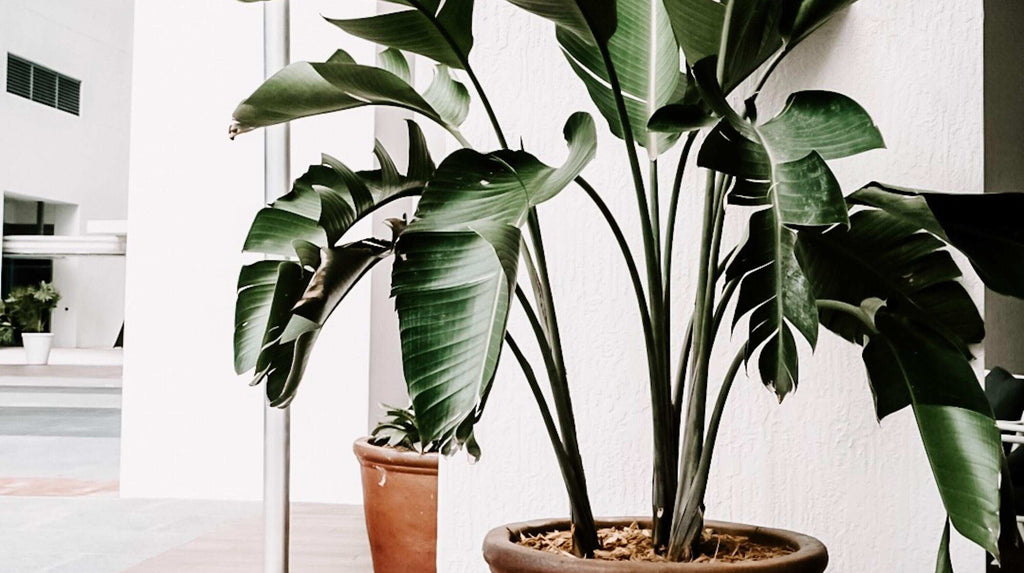
What can you grow on an apartment patio?
There are limitless opportunities when selecting what plants to grow on an apartment patio. Ultimately it will depend on your climate, sun exposure and space.
If you are working with a small space, opt for smaller “dwarf” varieties and keep them in small pots. This won’t restrict you from having fruit bushes or small trees, but search for those which you know are smaller.
An absolute essential is to consider vines and other climbers, especially if your garden is a small balcony or fire escape. You can even grow edible climbers such as beans, cucumbers and tomatoes.
A sunny balcony will work for fruit and veg. Tomatoes, lettuce, peppers and strawberries are good choices.
Hanging baskets with trailers can also add to the vertical layering of your apartment patio or balcony.
Do indoor herbs attract bugs?
Indoor herbs can sometimes attract bugs if you do not look after them. Here are some top tips to prevent bugs from being attracted to your indoor herb garden:
- Keep herbs clean: make sure to prevent dust and dirt buildup on your herbs that can attract bugs.
- Check for pests regularly: Inspect herbs frequently for spider mites, mealybugs, and aphids. Take immediate action to prevent them spreading if you do spot any pests.
- Use natural pest controls: If you do spot pests, consider natural pest control like insecticidal soap or neem oil.
- Ensure good air circulation: this can help prevent mould or mildew growth.
- Avoid overwatering: pests like fungus gnats love moist environments. Allow the top inch of soil to dry in between watering.
These easy tips should allow your indoor herb garden to remain bug free.
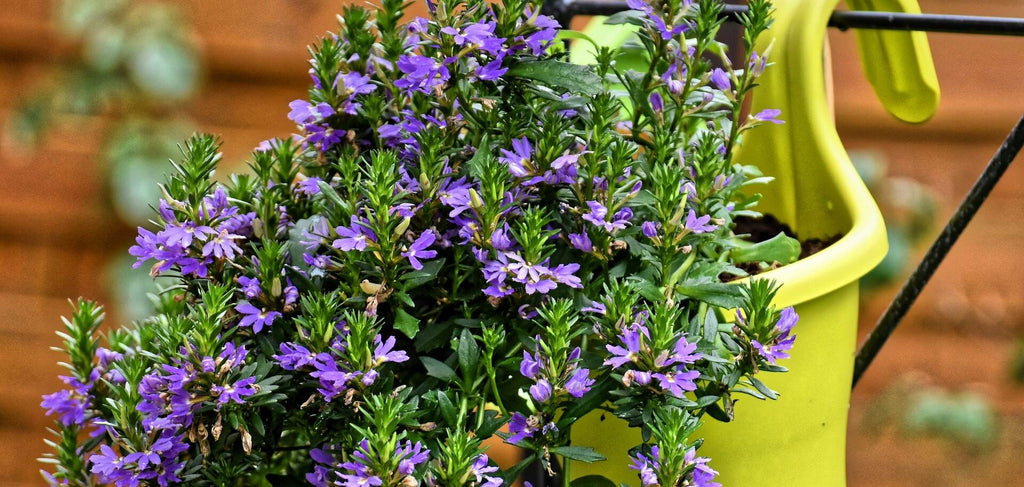
How to attract bees to your apartment garden?
Bees are nature's pollinators. They help encourage beautiful blooms by pollinating your flavours.
Sadly bees are on the decline, losing natural habitats where they thrive. So how can you attract bees to your apartment garden?
Chives and lavender are two favourites for bees, and they also provide benefits for you.
Having a variety of flowers on your balcony will also help attract bees. You’ll want to plant flowers in clusters, as these can make it easier for bees to find access to nectar. Grouping flowers together can also create a larger target for bees.
How to care for your apartment garden?
If you are new to apartment gardening, it will be best to start with low maintenance plants. These will be hardy, and survive even when you forget them (trust me, it will happen from time to time).
This is particularly important if you have a busy schedule.
You’ll want to select plants that prefer drier soil, don’t need full sun and don’t require regular pruning.
Here are some top tips to care for your apartment garden:
Water regularly
Water your plants regularly, but don’t overwater. Yes, I know what you are thinking, very unhelpful advice.
It’s always best to check how much water that specific variety needs. Drought resistant trees are going to need much less water and prefer slightly drier soil than your English veggies.
As a general rule of thumb, if the top inch of the soil is dry, then it’s time to water. If you feel the soil and it’s moist, then wait.
Plants will naturally need more water in hot weather, just like humans.
Water the soil until thoroughly wet, or place the plant in a sink and let it drink up the amount it needs. Drain off any excess water rather than letting it sit in a pool.
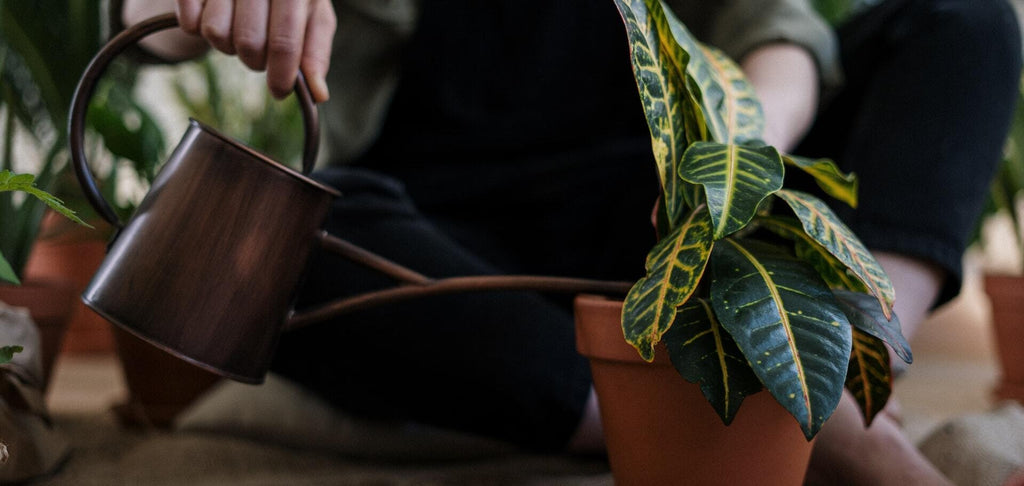
Adding plant food
Over time, soil naturally becomes nutrient deficient. Organic fertilisers may be needed to keep plants looking healthy.
Indoor plants will benefit from added nutrients. Choose the right products for your plants and follow the instructions on pack.
It’s generally best to fertilise indoor plants every 2-4 weeks in the summer, or 6-8 weeks in the winter.
Check your lighting
When apartment gardening, always start by making sure the plant you’ve chosen has the best lighting to meet its needs. This is almost always specified on the seed pack or plant pot label. If you still don’t know, give it a Google.
Light levels change throughout the seasons. Adjust the positioning of plants as needed. This will be especially important in those long winter months, when bright light lovers might not get the attention they need.
Similarly shade loving plants will need to be moved away from direct sunlight as those summer months draw in. Too much direct sunlight can burn many species' leaves.
Pests and bugs to watch out for:
Just like all species, indoor plants are not immune to pests and diseases. There are some easy things that you can watch out for to help maintain your apartment garden.
Spider mites: Spider mites are tiny, spider like pests that feed on the sap from your plants. They cause leaves to turn yellow and webbing on your plants. Spider mites thrive in dry environments, so keep your plant topped up with water and well hydrated.
Aphids: Aphids are a nightmare if they get onto your plants. They suck the sap from leaves, stems and flowers. They particularly love roses, tomatoes and peppers. There are natural ways to remove them. A strong stream of water sprayed on the affected area might be enough to dislodge them. Natural predators can also help, such as ladybugs. Otherwise neem oil or insecticidal soap are natural products that can be found at garden centres.
Root rot: Root rot is a fungal disease that occurs when plants are overwatered or have poor drainage. It is usually pretty easy to spot. The soil will most likely be very moist, the plant might even be sitting in water. It can cause yellowing leaves and wilting. To prevent root rot, make sure your plants have well-draining soil and avoid overwatering.
Leaf spot: Leaf spot is a bacterial or fungal disease that appears as brown spots on leaves. It can be prevented by avoiding overhead watering, providing good air circulation, and removing any infected leaves.
Leave a comment and feedback:
If you know someone trying to create their very own apartment garden, share this article on.
Green flats and apartments mean a green city, which leads to a more sustainable and green plants.
If you have any suggestions which you think we should have covered, please leave us a message in the comments section below. We’d love to hear from you.
You might also find these articles interesting:
Top 15 ways to recycle old T-Shirts (you can even turn them into hanging baskets)
Shopping sustainably through the 30 wears pledge
My favourite sustainable alcohol brands in the UK
Leave a comment
Comments will be approved before showing up.